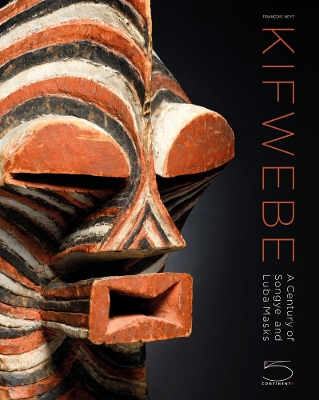Kifwebe masks are ceremonial objects used by the Songye and Luba societies (Democratic Republic of Congo), where they are worn with costumes consisting of a long robe and a long beard made of plant fibres. As in other central African cultures, the same mask can be used in either magical and religious or festive ceremonies. In order to understand Kifwebe masks, it is essential to consider them within the cosmogony of the python rainbow, metalworking in the forge, and other plant and animal signs.
Among the Songye, benevolent female masks reveal what is hidden and balance white and red energy associated with two subsequent initiations, the bukishi. Aggressive male masks were originally involved in social control and had a kind of policing role, carried out in accordance with the instructions of village elders. These two male and female forces acted in a balanced way to reinforce harmony within the village. Among the Luba, the masked figures are also benevolent and appear at the new moon, their role being to enhance fertility.
Although the male and female masks fulfil functions that do not wholly overlap, they do have features in common: a frontal crest, round and excessively protruding eyes, flaring nostrils, a cube-shaped mouth and lips, stripes, and colours.
Art historians and anthropologists have taken increasing interest in Kifwebe masks in recent years.
- ISBN13 9788874398645
- Publish Date 26 February 2020
- Publish Status Active
- Publish Country IT
- Imprint Five Continents Editions
- Format Hardcover
- Pages 368
- Language English
